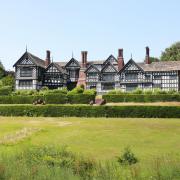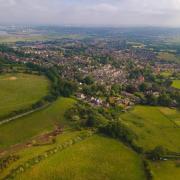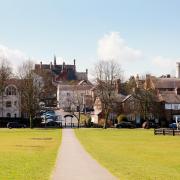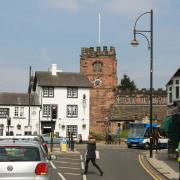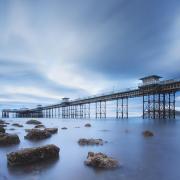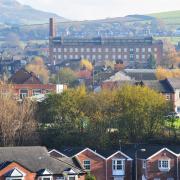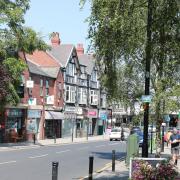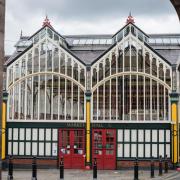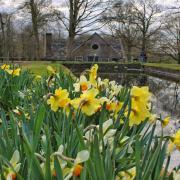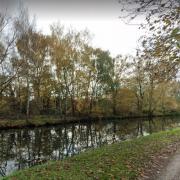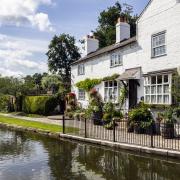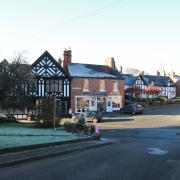Natural beauty abounds in the hillsides, coastal towns and great houses of North Wales. A trip to any one of these seven locations makes a great day out

Green idyll
Bodnant Garden
A beautiful garden in a lovely setting, Bodnant Garden boasts 80 acres of clipped lawns, vivid floral displays, intimate corners, terraces and lakes - all set against the majestic backdrop of Snowdonia.
Many of these plants are the result of expeditions over a century ago to all corners of the world, and the garden was created over the course of five generations by the same family. The first of those generations was Henry Davis Pochin, an industrial chemist, who laid out the garden from 1874, having already created a large terraced garden at his home in Llandudno.
Points of interest include The Dell, with its tall Redwood trees and waterfall, the Italianate terraces, from which to best appreciate the views over Snowdonia, The Poem - Pochin’s family mausoleum with ornate stained glass windows - and the laburnum arch.
Bodnant Garden, Tal-y-Cafn, near Colwyn Bay LL28 5RE, 01492 650460

The stateliest of homes
Erddig
Two miles south of Wrexham lies one of the nation’s favourite stately homes. Erddig was built three centuries ago for Joshua Edisbury, high sheriff of Denbighshire, but was occupied by the Yorke family for 240 years. Now a National Trust property, it offers a fascinating glimpse of the real life upstairs-downstairs relationship between servant and their masters, the Yorkes having immortalised their household staff in pictures and verse.
The home is set in a 1,200-acre country park which also boasts a formal walled garden which has been painstakingly returned to its former glory, with rare fruit trees, a canal, a pond and other water features, plus a Victorian parterre.
One striking and yet practical feature of Erddig is the Cup and Saucer Waterfall, which gathers water from the Black Brook into a circular stone basin with a cylindrical waterfall at its centre.
Erddig, Wrexham LL13 0YT, 01978 355314

A walk on the beach
Llanddwyn Island
There are few walks more fulfilling than that to Llanddwyn Island in Anglesey. Take the turning off the A4080 at Newborough opposite the Premier shop, following the sign for parking, continuing through the toll point and Newborough Forest to the large car park.
Head over the sand dunes and take in a panorama which includes Snowdonia to your left and a long sandy beach arcing round to Llanddwyn Island on your right. Make that walk to the island and you will find yourself on a rocky outcrop teeming with wildlife, surrounded by sea and dotted with picturesque little coves.
The ruins of Llanddwyn chapel remind us of the island’s history: it takes its name from the church of St Dwynwen, the Welsh patron saint of lovers.
At the tip of the island is a small white beacon house, which once guided shipping into Menai Strait, and now serves as frequent inspiration for photographers.

Lighthouse on the rock
South Stack
The gleaming white lighthouse at South Stack, the western tip of Anglesey, sits on a craggy lump of rock, separated from sheer granite cliffs by 30m of roiling seas.
Just crossing the bridge to the island seems like an adventure in itself (though not quite so much an adventure as it was for the first lighthouse keepers, who crossed that gap in a basket strung from a hemp cable). By that point, you will have descended 400 steps, snaking down those cliffs, with the prospect of 400 steps back up to come.
South Stack is, to many, simply the best view in Wales. To the majestic landscape, we must add the enticement of rich birdlife - guillemots, razorbills and puffins - which you will be able to see from the RSPB visitor centre (post code LL65 1YH ) just down the road from the cliff top.

Little Italy
Portmeirion
The magical place which is Portmeirion is the vision and indeed the life’s work of one man, the architect Sir Clough Williams-Ellis. The setting alone - on the estuary of the River Dwyryd - would be enough to take the breath away.
But over the course of 50 years, from 1925, Williams-Ellis turned a neglected wilderness into a village which looked as if it belonged on the Italian Riviera.
It has a Central Piazza, a Gothic Pavilion, ornamental garden and campanile. There is exotic woodland, a Gothic mansion called Castell Deudrath, a stop on the Ffestiniog Railway just a mile away and a quayside to die for.
Portmeirion also has a claim to fame as the setting for the strange 1960s TV drama The Prisoner, and a host of celebrity connections including the fact that Noel Coward wrote Blithe Spirit while staying at the Hotel Portmeirion in 1941.

The beach with a pub
Porth Dinllaen
If any beach qualified for a picture postcard, it is Porth Dinllaen. It is a peninsula on a peninsula - a promontory poking from the north side of the Llyn Peninsula. The beach itself nestles to the east of that promontory, sheltered from westerly winds.
There are rock pools, a broad stretch of gently-shelving sands, seas which are implausibly blue in the right light, and, best of all, there is a picturesque pub at the end of the beach, the Ty Coch Inn, cited on lists of the world’s best beach bars.
The pub was built in 1823 from red brick thought to have arrived here from Holland, used as ballast in a ship transporting granite from Wales to Holland. It’s a pub which, unless you are a resident, can only be reached on foot, and that is its charm - walk along the beach, sit on the wall with sandy toes, pint in hand and gaze out to sea.

A top destination
Mount Snowdon
Not just the highest mountain in Wales, Snowdon is the highest point anywhere in Britain, excluding the Scottish Highlands. On a good day, that means the summit affords you some of the best views you will ever see, west to Ireland, and east to the hills of the Peak District. Theoretically, there is a clear line of sight to southern Scotland.
You have a choice how to get to that summit. You can walk, using any of half a dozen paths, each a round trip of up to nine miles. or you can take the Snowdon Mountain Railway, which for 119 years has been chugging its way from Llanberis to the mountain top, a distance of almost five miles.
At the mountain top is the Hafod Eyri visitor centre, opened in 2009, which has panoramic windows from which to enjoy the view over the valleys.










